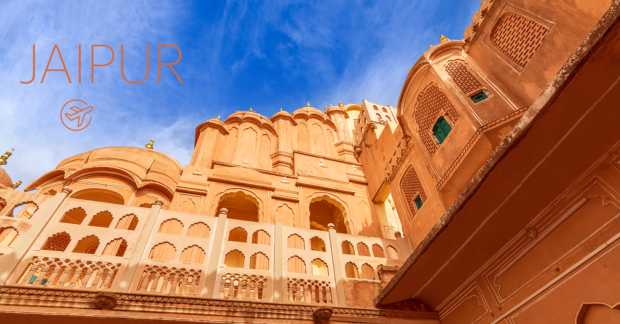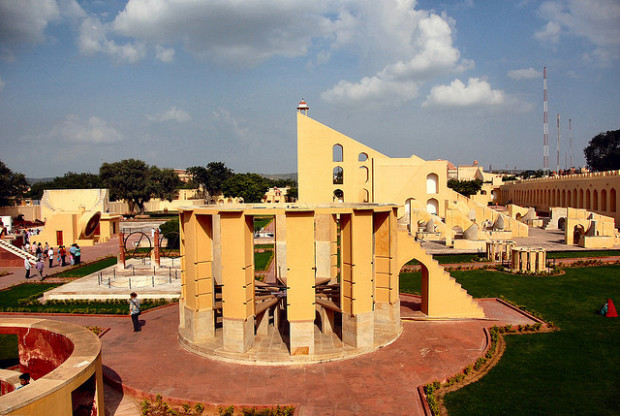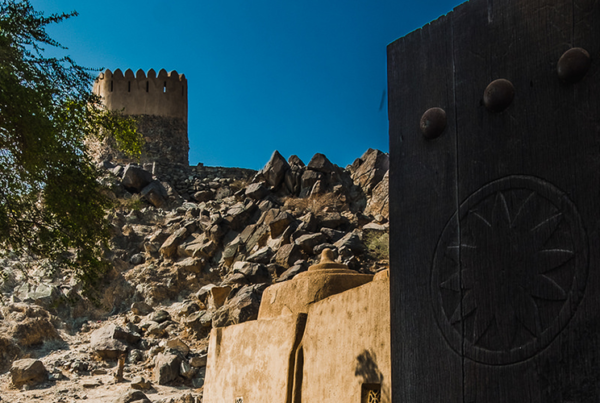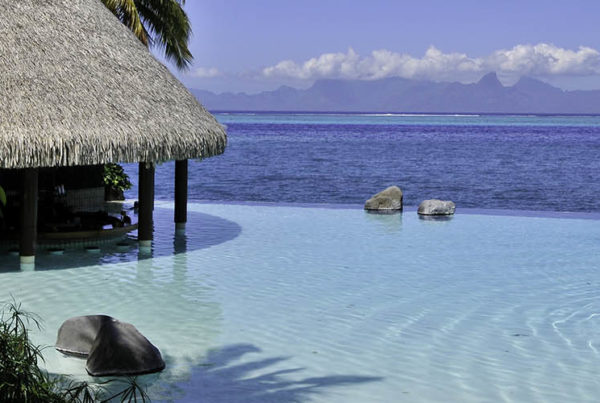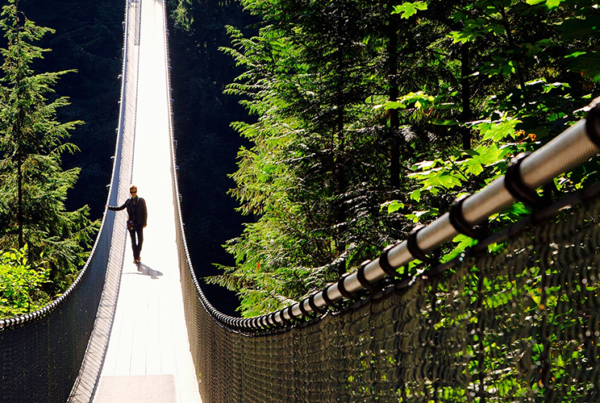The regal cuisine, unrivaled architecture, and raw natural beauty of the Rajasthan countryside would be enough to make Jaipur into a world class destination. Yet, there is so much more to this city. Jaipur is packed with spellbinding festivals, richly decorated elephants casually going about their work, enchanting cultural insights, and a labyrinth of colourful dream palaces at every turn.
A romantic pink hue pervades everything in Jaipur, hence the nickname “Pink City”. Here you can find a Jaipur hotel and see the exotic cityscape completely washed in a soft, glowing shade of blush that deepens as the sun sets each evening. Pedestrians from all walks of life, seemingly from a mix of centuries, weave through the boulevards and bazaars amid a cavalcade of rickshaws and motorbikes, three-wheeled trucks and elephants, all buzzing with a vibrant exuberance.
Festivals and entertainment
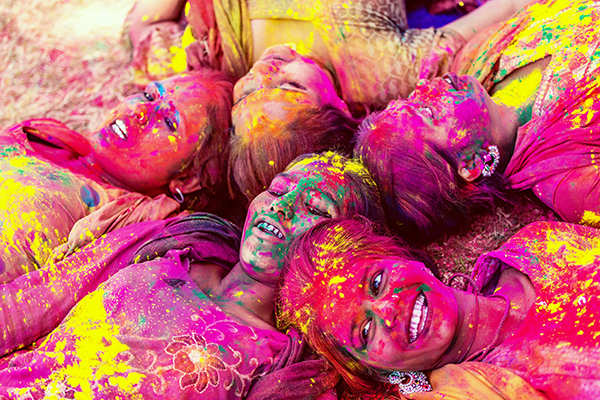
Source: Getty Images
Elephant Festival
Probably the most well known of Jaipur’s festivals is the Elephant Festival. Every year in February or March (according to a lunar calendar date), the Elephant Festival is celebrated on the eve of the India-wide Festival of Colours, or Holi (pictured above). Elephant polo and elephant tug of war are just a couple of the activities that take place during this festival.
Dancing, celebrations of astronomical shifts, the marriage procession of the gods, and intricately decorated elephants marching through the streets–this is a glimpse of Jaipur as the world’s greatest city for festivals. Jaipur’s community brings together over six and a half million people with a very diverse array of backgrounds. When the festivals burst forth into the streets Jaipur, everything comes to a halt and the city takes on an entirely original character to match each celebration.
Kite Festival
A festival that embraces the whole city of Jaipur is the Kite Festival, held every January 14. This has become a full government holiday, so the entire population of Jaipur and surrounding suburbs is free to pour into the streets and let their kites fly. The Kite Festival brings the contrast of bright, bold colours to this city that’s has become so well known as being monochrome pink. Truly, this is massive display of vitality that everyone should experience at least once in their lives.
ZEE Jaipur Literature Festival
Another citywide festival that takes place in January is the ZEE Jaipur Literature Festival. Although this is a relatively new annual event, it has already gained the reputation as the single largest free literary festival in the world. In fact, a wide sampling of South Asia’s most prominent literary leaders make the trip.
Teej Festival
During the monsoon months of late July and early August, this joyful festival brightens up Jaipur’s streets with its parades of colour and sound. Teej Festival is celebrated throughout Rajasthan, but it’s most pronounced in Jaipur. With the focus on the story of reunited gods Shiva and Parvati after 100 years of separation, the celebration commemorates marriage, especially married women. Women dress in their finest clothes to celebrate the goddess, animals are adorned with coloured paint and jewels, music fills the air and dancers take to the streets. The entire city of Jaipur gives itself over to two days of ecstatic festival bliss.
Gangaur Fair
The goddess of abundance, Gauri, is celebrated in the springtime throughout the state of Rajasthan for Gangaur Fair. Young girls pray for an esteemed future spouse while married women pray for the well-being and long lives of their husbands. When this festival takes over the streets, the people gather to witness a particularly pious procession that includes songs and manifestations of the gods Shiva and Parvati. This festival is uniquely emotional as an exhibition of the truly devoted.
Architectural sites and amazing sights
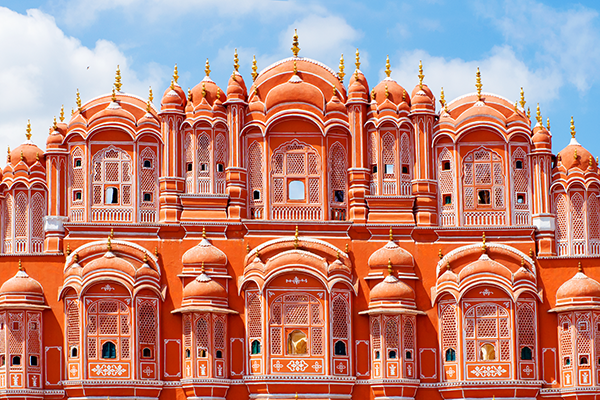
Source: Getty Images
Hawa Mahal
Hawa Mahal, the romantic pink sandstone fortress cascading over the streets of Jaipur, was originally built in 1799 as a vantage point for the ladies of the royal household. From behind the dark shadowed windows of Hawa Mahal, high above the streets, the women could observe the city below without being observed themselves.
Today, the structure still stands as proudly as ever. The landmark “honeycomb” facade reaches five stories high and is made up of 152 windows nestled into rounded latticed balconies, exemplifying the strong yet delicate Rajput architecture in all its splendour. When the sun drops down toward the horizon, a small beam of sunlight can sometimes be seen shining through a top story window. For visitors looking to learn about the history of this building, a visit to the Hawa Mahal Museum, just behind the monument, is a must. It displays relics, artifacts, statues, and other historical memorabilia that commemorate Rajasthan’s royal history.
City Palace
Located just behind the Hawa Mahal is Jaipur’s famous City Palace, the centerpiece of the city and the heart of founder Jai Singh II’s reign. The City Palace includes Chandra Mahal and Mubarak Mahal as well as a number of other structures. Built with highly trained architectural care, City Palace combines Rajput, Mogul and European styles and is another stunning example of Jaipur’s royal influences. Concentric zones to fortify the inner dwellings of the palace, as well as the period-appropriate asymmetric design, make it an architectural marvel. Today, part of the City Palace is home to the Maharaja Sawai Man Singh II Museum, which showcases historical relics and art from the city and the region.
Jantar Mantar
Maharaja Sawai Jai Singh II not only envisioned and executed the highly organised city of Jaipur, he was also responsible for the development of five astronomical observatories throughout west central India. Jantar Mantar is one such observatory located in the heart of Jaipur.
The large-scale geometric formations are the stars of this historical structure, jutting out independently with staircases that lead to nowhere and in what would appear to be a random manner. The observatory is a wonder to architects and artists alike, and today, it is presented to audiences as an all-encompassing experience, complete with time-lapse sequences, drawings and 3D models to showcase this historical site.
Ishwar Lat
Ishwar Lat, which translates to “heaven piercing minaret”, is a monument near the centre of Jaipur that offers the best view of the city. Ishwar Lat was constructed by Jai Singh II in 1749 to commemorate a great victory. However, local legend has it that he built this monument because it gave him a perfect vantage point to see the Prime Minister’s daughter, with whom he had fallen in love. For current day visitors, this is a perfect spot to catch the beginnings of a sunset or bring a small packed lunch and soak in the sights of Jaipur and the surrounding areas.
Albert Hall Museum
Albert Hall Museum near the city centre is home to an industrial arts exhibit. This museum displays artifacts and information on the history of traditional arts and crafts around Jaipur and Rajasthan. It’s goal is to support local traditions and customs, and the people of Jaipur are very proud of this museum. Its architecture even impressed Rudyard Kipling, who wrote of the Albert Hall Museum, “It is now a rebuke to all other museums in India from Calcutta downwards.”
Day trips from Jaipur
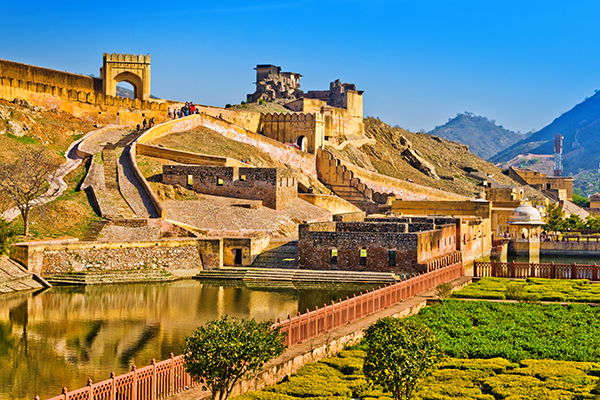
Source: Getty Images
As the epicentre of the area’s magnificent historical structures, Jaipur is an ideal home base for exploring the historic architecture and natural beauty of greater Rajasthan. Travelling outside the city limits by only a few kilometres will offer a clear view of just how much influence the Rajput rulers had over the area. These journeys can afford a traveller a sense of connecting to history on a very personal level.
History is very much alive and well in Rajasthan. A stunning array of fortresses, palaces, temples, and other fortifications, the majority of which were built in the 18th century, line the hilltops to protect the area’s many villages as well as generations of royalty.
Amber Fort
One such Rajput palace is located only about 11 kilometres from the centre of Jaipur. The sand-coloured walls of Amber Fort (pictured above) fade into the surrounding hillside in a nearly perfect disguise. This was the original capital of Rajasthan before Maharaja Jai Singh II relocated during his reign to the City Palace. Constructed using breathtaking red sandstone and marble, this structure was built roughly 200 years before Jaipur was established. Today, you can hop on the back of an elephant decorated in bright colours and patterns. Rajput kings considered elephants their premier symbols of power. These animals have long been revered by locals and are often richly costumed with paints, fabrics, and jewels. You will sway gently in your high perch as your elephant lumbers majestically up the stone walkway to the hilltop’s main entrance. This is arguably the most popular sight in the area surrounding Jaipur, so be prepared to meet people from all over the world.
Jaigarh Fort
Nearby Jaigarh Fort is another very popular destination on the outskirts of Jaipur city. Jaigarh was built in 1726 to protect the city of Jaipur. A true fortress, this fort lacks the intricacies of the fort-palace architecture found elsewhere in Jaipur. Fortunately, this fort never served in any serious conflicts and thus has remained essentially intact in its original structure. It offers visitors a breath-taking view over the surrounding mountainous landscape.
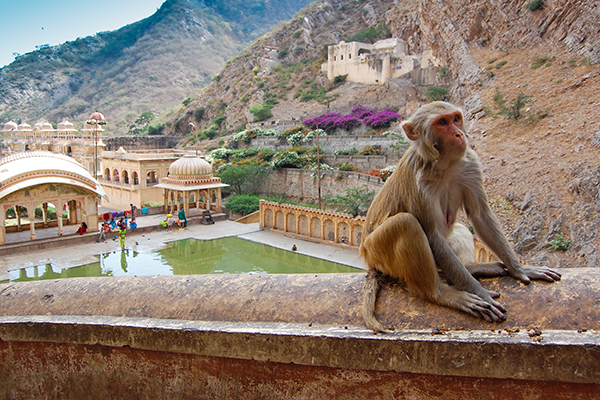
Source: Getty Images
Galtaji Temple
Just ten kilometres outside of Jaipur, Galtaji Temple, also known as the Monkey Temple, is a Hindu site with natural springs where pilgrims can immerse themselves to wash away their sins. The temple is also home to tribes of monkeys who gleefully congregate to enjoy the temple’s fine spring water. This other-worldly temple affords not-to-be-missed views of Jaipur. Galtaji Temple owes its stately elegance to the architects serving under Maharaja Sawai Jai Singh II, who built much of what is most impressive about the palaces of Jaipur.
A delicious destination
Traditional meals from the region are served in many local restaurants. However, there has also been an uptick in international cuisine in Jaipur. Restaurants offer everything from all-India cuisine to Italian pastas.
Sweets in Rajasthan are absolutely incomparable. This is a destination with a sweet tooth, and you can find these goodies served up at restaurants or food stalls throughout Jaipur. Some local favorites include mawa (a spicy flour snack dipped in sugar syrup) and ghevar (a buttery disc-shaped batter cake, deep fried and covered in pistachios and cardamom).
Cinnamon (Jai Mahal Palace, Jacob Road)
At Cinnamon, you dine like royalty where each meal is a personalized masterwork, including dishes like Tandoori prawns, sweet delicacies, dal, curries, naan, roti, and sorbas. Sit cross-legged on the floor surrounded in the rich fabrics and tribal jewelry of the ancient warrior kings. Kashmiri, Rajasthani, Hyderabadi, and Awadhi cuisines are all represented here amid the arches and alcoves of a true palace.
Handi (Mirza Ismail Road)
The distinct flavors of Tandoori and Mughlai cuisine from distant Southern India get a brand new interpretation in the skillful hands of Handi. Tourists have awarded it the “Best North Indian Restaurant” for its blending of spices and cultures in a modern setting. They have been developing innovative dining for 30 years, though they are famous for their Chicken Kali Mirch and their many variations of roti cooked in clay pots.
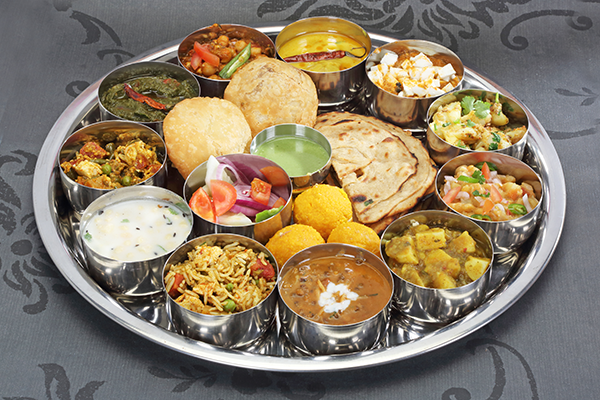
Source: Getty Images
Copper Chimney (Maya Mansion)
This is a favorite hangout for local businessmen and artists. The thali (a complete meal made up of nine dishes or so) is the best choice here, like a buffet brought to your table. Copper Chimney excels at the traditional mutter paneer (a stew of bright green peas and cubes of cottage cheese) and the rogan josh (buttered lamb in the style of the Kashmiri cuisine with Persian spices) is passionately prepared.
Suvarna Mahal (Taj Rambagh Palace, Bhawani Singh Road)
Jaipur offers a few chances to dine in palaces and Suvarna Mahal is among the very finest. The splendor of the décor in Taj Rambagh Palace can only be matched by the spices of their lamb kabob. It feels like traveling through time when you a share a meal in a secluded jharokha (an enclosed balcony lit by flaming torches) like the ancient rajas. Finish the night with rasmalais (sweet cream with balls of cottage cheese) and imagine what you will conquer in the morning.
The serene magic and mystery of Jaipur

Source: Getty Images
Jaipur is a magical city displaying a vibrant array of colours amid its rosy ancient palaces. A city painted pink would look unnatural in many places, but here on the edge of the desert, at an immense distance from the Western world both geographically and philosophically, Jaipur feels eternally serene. Festivals with loud colors clashing and spinning and all hues of kites flying overhead–these are what make Jaipur the bright, colorful, intensely alive city that it is.
The local population is both curious and welcoming, giving even the bustle of daily life a cheerful aura. Thanks in large part to the influence of the Rajput rulers of the 18th century, the architects of this planned city and the tribal warrior kings before them, Jaipur is a home to wonders both natural and man-made. It has built itself into India’s central attraction of the north and one of the Top 50 Travel Experiences for Kids.

